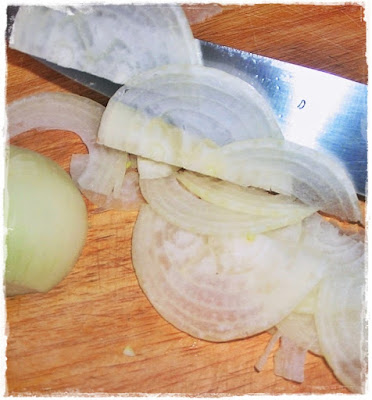I have just spent a lovely few days with my family who I
don’t see nearly as much as I’d like due to living far apart.
My sister, Maggie, is very foodie; we have run restaurants
together and she together with her husband and my oldest niece (the lovely
Jenny) now as the lovely Art Café and Cakehole!
My brother, David, however is not at all this way
inclined and he amused me many times with such comments as ...
“Lasagne – what’s all that about?”
“Rice – where’s the point in that?”
and my favourite, said in amazement ...
“Lettuce – why?”
He went on from this to query why anyone in their right mind
would want to put “greasy oil” (of all things) on “wet tasteless lettuce” and
it is this subject that I wish to address today although, knowing my bro, I
don’t think I’ll convert him!
Of course people in their right mind rarely put just oil on
their lettuce (although some particularly tasty evoo with a salty sprinkle can
do the trick); they commonly make a vinaigrette and there is even a
mathematical formula to help with this ...
3 parts oil to 1 part vinegar or other
acidic
ingredient such as lemon juice
To an extent this formula holds true but
it can be varied a little to suit different ingredients or even different
accompaniments for instance a slightly oilier dressing might be good if you are
serving wine with the salad so that the meal is not too acidic.
A few Handy Hints and Info vis
a vis Vinaigrettes
~ Probably the best
way to make a vinaigrette dressing is to put the vinegar plus other ingredients
such as mustard into a liquidiser and then gradually drizzle in the oil so that
the mixture emulsifies, you can also do this by hand with a whisk or ...
~ A quicker and
easier way is to put all the ingredients into a jam jar, seal with the lid and
give it a jolly old shake. This is useful because unused dressing can be kept
in the jar in the fridge and if it separates just shake again before use.
~ Having said that
if the dressing is simply oil and vinegar it won’t hold together whatever you
do as they don’t mix so you need an emulsifier such as a little Dijon mustard,
garlic, cream, tomato paste, mayonnaise or maybe other ingredient which will
not only add flavour but helps the oil and vinegar bind together. Egg yolk is a great emulsifier but then we
are getting into the realms of mayonnaise.
~ The vinaigrette
will emulsify easiest if all ingredients are at room temperature.
~ Whilst in most
cases olive oil is the norm and extra virgin olive oil is particularly good
different vegetable oils can be used or maybe cut the richness of extra virgin
with a light oil or add a touch of sesame or walnut oil as appropriate.
~ The best way to
taste a vinaigrette prior to serving is to just dip a little lettuce leaf into
it, shake off excess and bung it in your mouth.
~ However delicious
the dressing don’t drown the salad; a light film of dressing is sufficient.
~ A simple
vinaigrette containing no fresh ingredients will keep very well but if you add
fresh garlic, herbs, shallot etc. then keep chilled and use within a couple of
days.
Basic Vinaigrette Recipe
½ tsp Dijon mustard
1 tbsp vinegar – of
your choice eg. red wine, balsamic or sherry vinegar
3 tbsp vegetable oil
pinch of salt
~ Liquidise, whisk
or shake the ingredients as above.
Fairly obviously this makes a little over 4 tbsp, which is 60ml/2
fl oz/¼ cup, but make as much as you like so long as you stick to the same
percentages.
Quick Additions to Vinaigrette
~ Add ½ tsp runny
honey et voila; honey mustard vinaigrette – this goes extraordinary well with
ham salad.
~ Mix in a little
crushed garlic to taste.
~ Fresh herbs – if
making the vinaigrette in the liquidiser just add the herbs and they will chop
right into it. Try fresh parsley in a lemony dressing.
~ Copious amounts of
freshly ground black pepper – great if you use lemon juice instead of vinegar
(also great if you don’t!)
~ This is an odd but
good one – sauté a couple of chicken livers, crush with a fork and mix into a simple
vinaigrette (or a complicated one if you prefer) to dress crunchy salad leaves.
~ Crumble in some blue
cheese – particularly good with roasted garlic and black pepper too.
~ Scrape in the
seeds from a fresh fig or two – lovely served with calves liver!
~ For Salade Niçoise
– use lemon juice instead of vinegar and add 2 crushed anchovies and a crushed
garlic or two.
In all cases, of course, taste and season before serving!
Slightly More Complicated Salad Dressings
Good with mozzarealla and torn basil, for instance.
2 reasonably large
(not beefsteak) ripe tomatoes
1 tsp minced garlic
1 tbsp red wine
vinegar
3 tbsp olive oil
salt, pepper and a
pinch of cayenne
possibly a little
sugar
~ Quarter the
tomatoes and coarsely grate them, cut side to the grater, right down to the
skin.
~ Stir in the garlic and vinegar then
whisk in the oil (or shake in a jar).
~ Taste and season,
if too sharp add a little sugar.
This vinaigrette is not a great keeper – use within a day or
two.
Baked Lemon Vinaigrette
2 heavy thin skinned
lemons
(heavy and thin
skinned means juicy!)
½ tbsp olive oil
2 tsp honey
another 3 tbsp olive
oil
salt and pepper
~ Preheat oven to 400ºF/200ºC/180C
fan/gas 6.
~ Halve the lemons
and put cut side up in a shallow ovenproof dish.
~ Drizzle the cut sides with the ½ tbsp
olive oil.
~ Turn cut side down and bake for 25-30
minutes till just turning golden.
~ Cool and then
squeeze out the juice.
~ Stir in the honey (plus any juices in
the baking dish) and then whisk in the oil.
~ Taste and season.
Good additions to this are fresh herbs (parsley or thyme in
particular) or a little chilli. Whatever you add, within reason, this is particularly good with
seafood.
Warm Fennel Vinaigrette
3 tbsp olive oil
1 tbsp cider vinegar
1 tbsp lemon juice
salt and pepper
fennel fronds – finely chopped
~ Remove the fennel fronds and set aside.
~ Finely chop the fennel bulb.
~ Gently cook the fennel in the olive
oil till tender and golden.
~ Cool the fennel and oil for about 15
minutes then stir in the vinegar and lemon juice.
~ Taste and season.
~ Finely chop the fennel fronds and
stir in just before serving.
This is a great
sauce for fish – make it in advance if necessary and re-warm gently to serve.
Or serve cold as a dressing for fishy salads.
Caesar Dressing Vinaigrette
Normally Caesar Salad is dressed with a garlicky anchovy
mayonnaise but here is a good egg-free alternative. This one is best made in a liquidiser
although I’m sure you can manage if you haven’t got one.
1 tbsp freshly grated
Parmesan
1 tsp finely grated
lemon zest
1 tsp Dijon mustard
2-3 anchovy fillets
1-2 garlic cloves
2 tbsp lemon juice
6 tbsp olive oil
salt and pepper to
taste
~ Liquidise together
the first 6 ingredients.
~ Gradually add the
olive oil till emulsified.
~ Taste and season BUT be very careful
about salt; it may not need any due to the saltiness of the anchovies.
Toasted Nut of your Choice Vinaigrette
You do need a liquidiser or food processor for this one.
60g nuts
1 garlic clove
60ml vinegar – sherry
vinegar is good with nuts
180ml olive oil
salt and pepper
~ Toss the nuts in a
dry pan over medium heat, shaking the pan till the nuts are lightly toasted and
fragrant.
~ Put them in the liquidiser together
with the garlic and pulverise them.
~ Add the vinegar and then, gradually,
the oil till thick and creamy.
~ Taste and season.
~ If the mixture is
too thick for your liking thin it with a little warm water.
This is not a good keeper – 2 days max. Keep in the fridge but bring to room
temperature before using.
Incidentally ~ here for
your entertainment is a HUGE lettuce I bought in France a few months ago, for perspective that
is my size 5 foot beside it!
Links to other vinaigrette recipes around Sudden Lunch!
~ Pear Vinaigrette – with cider vinegar and honey this is
great with blue cheese salads.
~ Roasted Carrot Vinaigrette – when I made this I first served it with sea bass, but it is quite a friendly flexible sort of dressing.
Things to do with vinaigrettes other than dress a salad ...
~ Drizzle over
things other than salads – maybe hummus (this confuses my brother too!) or
appropriately flavoured soups. Try a
little Roasted Shallot Vinaigrette on steak or, as mentioned above, fig
vinaigrette is delicious with calves’ liver
~ Sometimes a
vinaigrette is good stirred through freshly cooked, and even hot if you like,
vegetables – try a minty dressing with fresh peas, for instance.
~ Marinade meat or
fish in a suitable vinaigrette to tenderise and flavour it. Meats can be marinated for several hours but,
in the case of fish, just a few minutes is fine – too long and the acid will
actually “cook” the fish and you will have ceviche – nice, but not what you intended.
Famous Salad Dressing Quote
Anonymous (he said
quite a lot of things actually!)


























